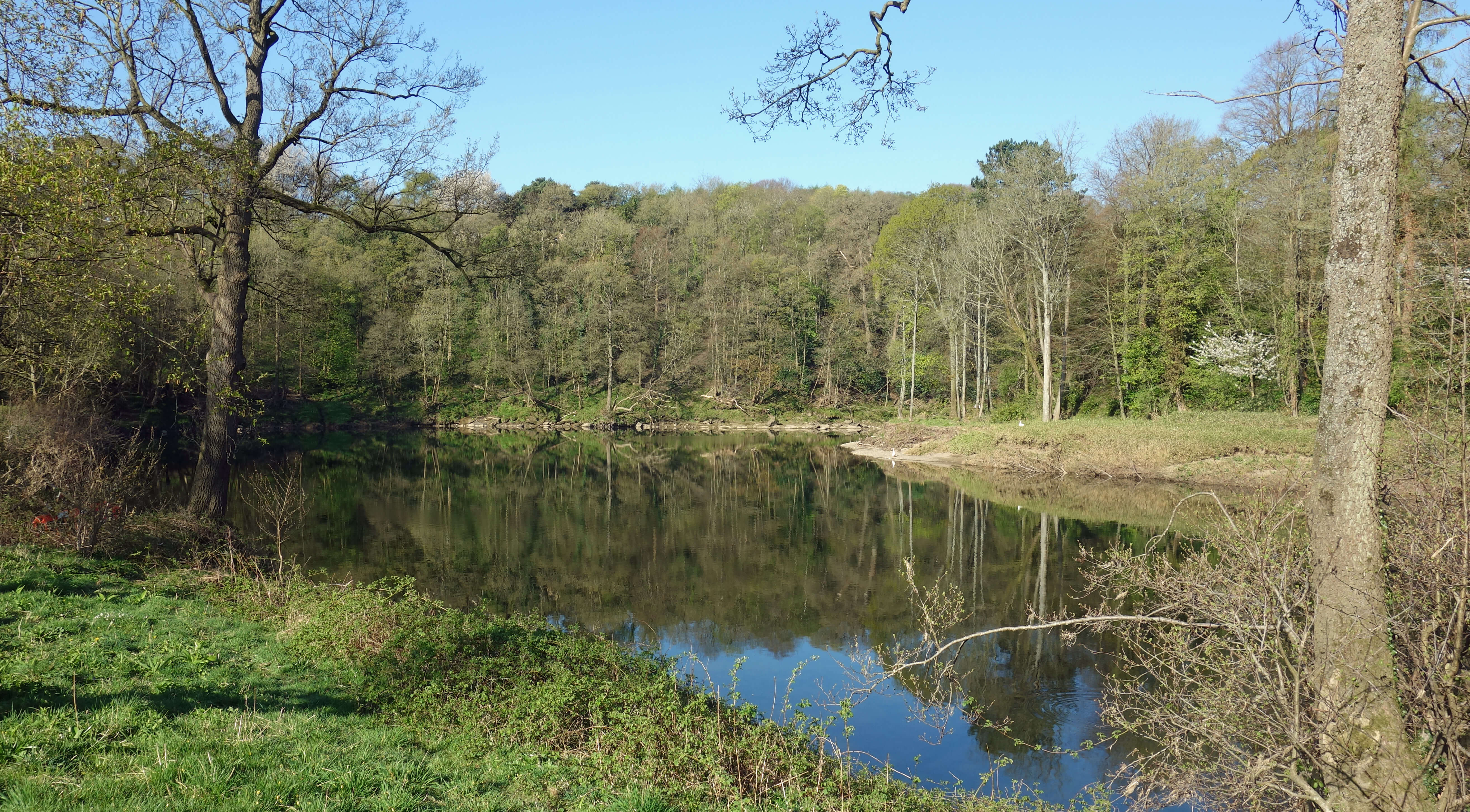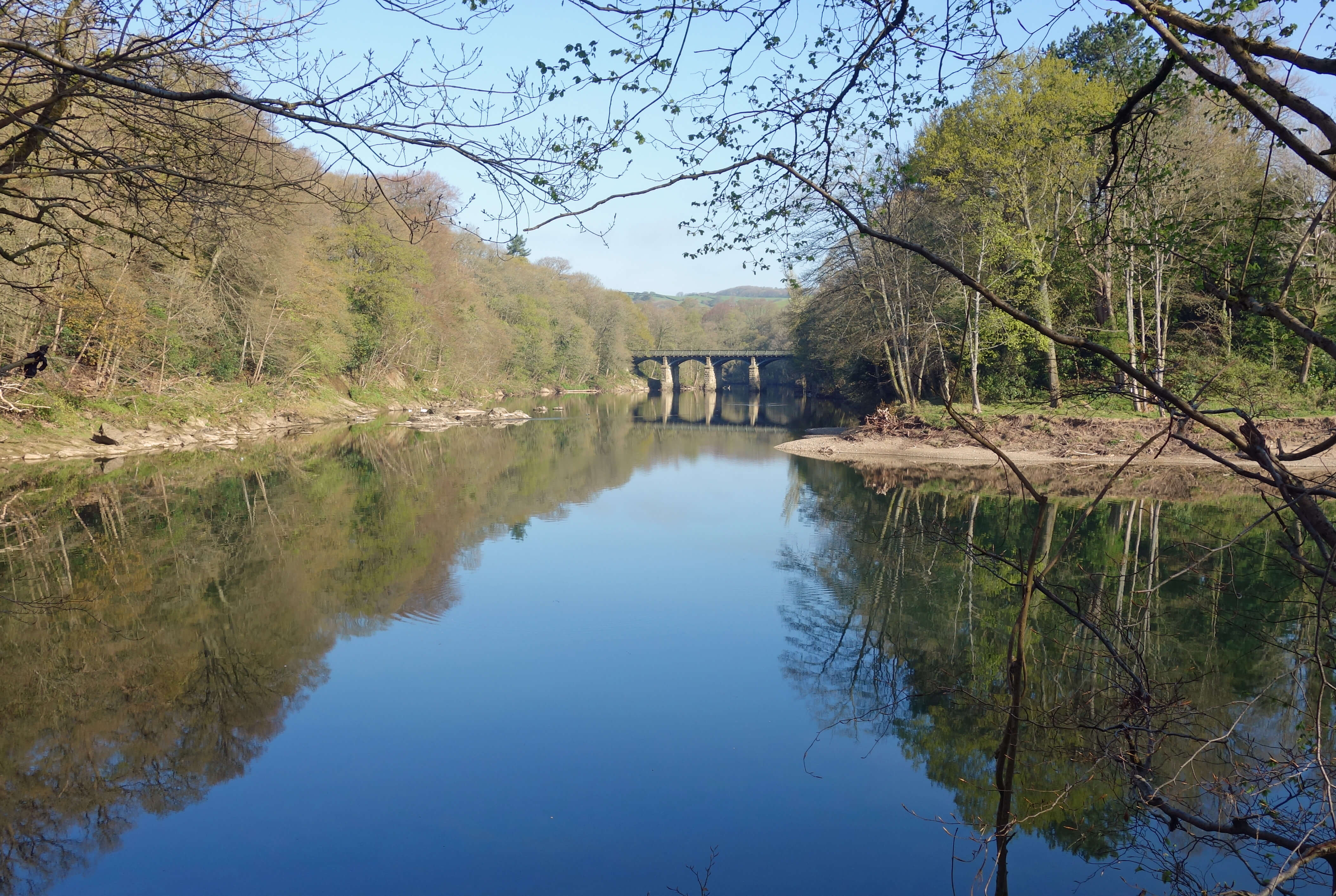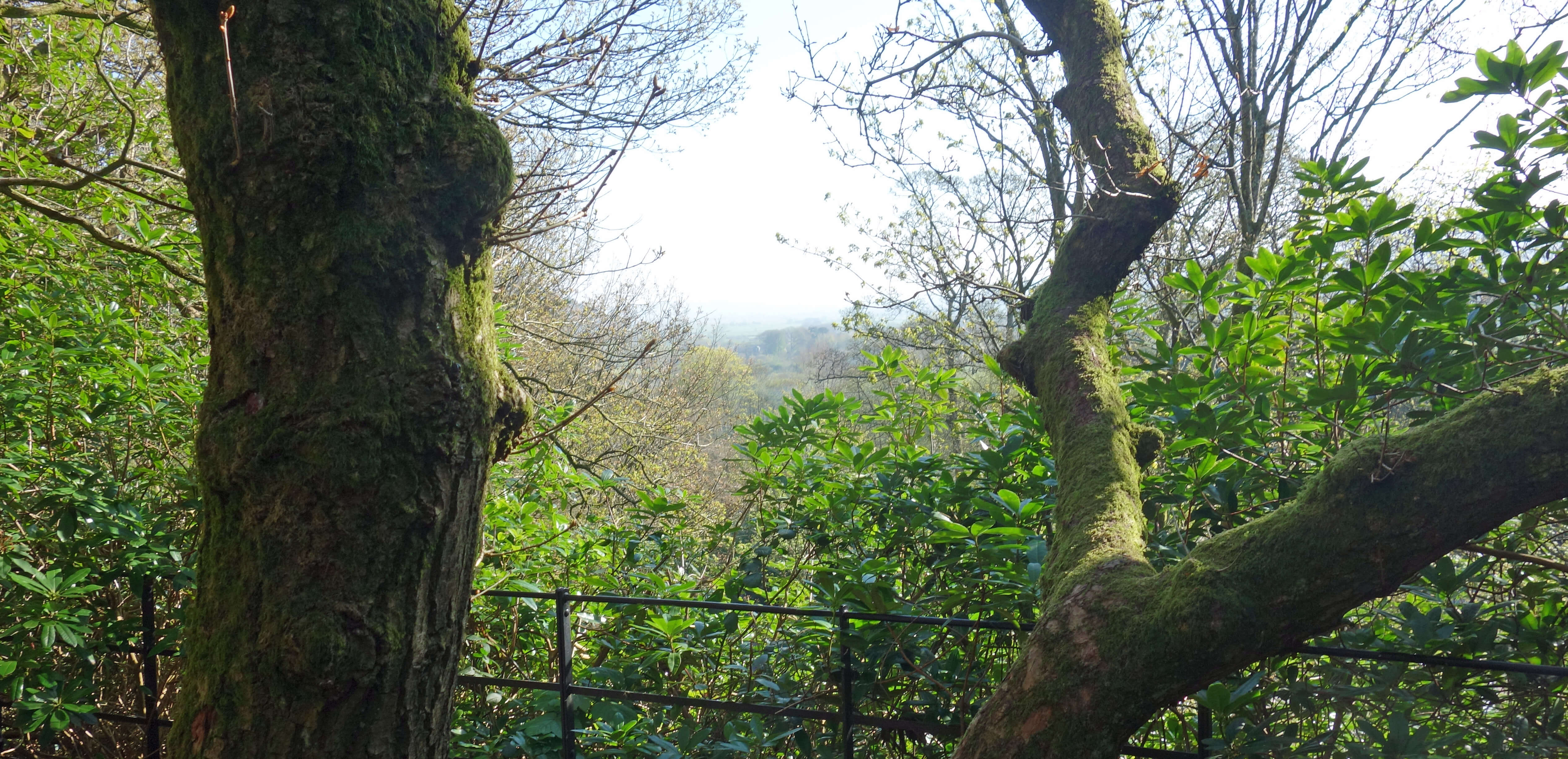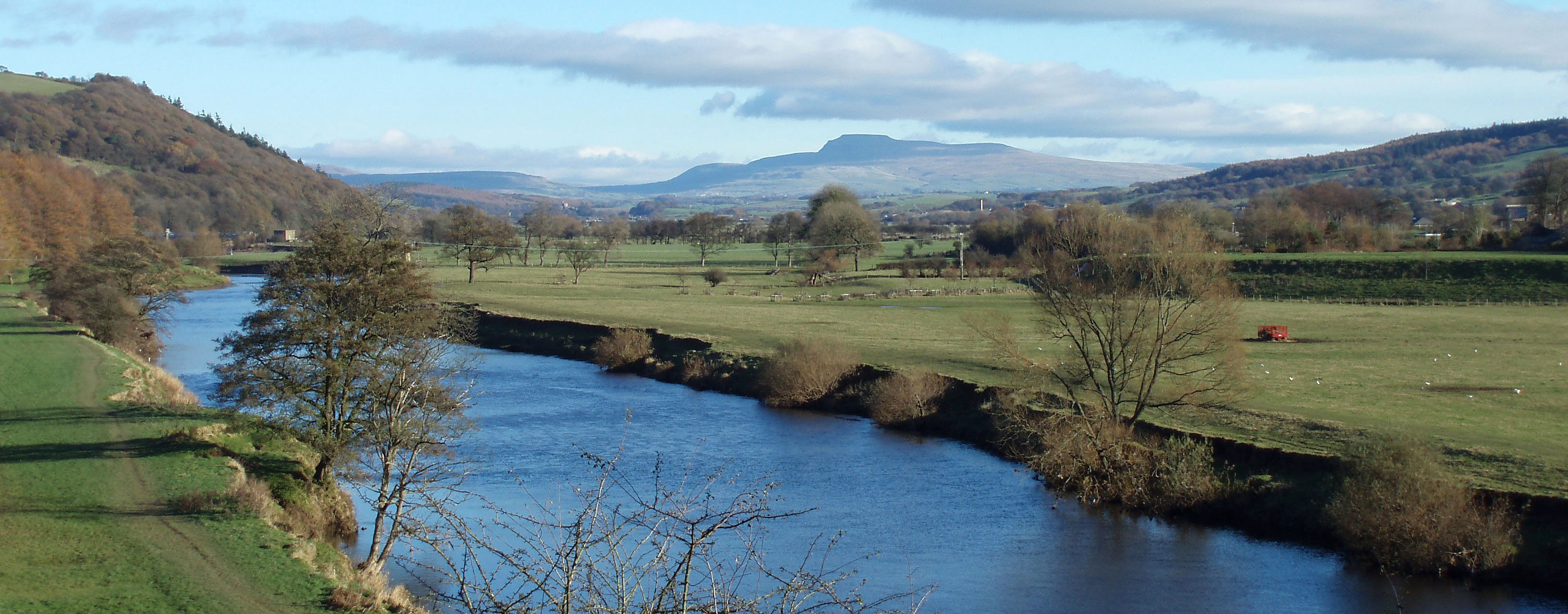
Home
Preamble
Index
Areas
Map
References
Me
Drakkar
Saunterings: Walking in North-West England
Saunterings is a set of reflections based upon walks around the counties of Cumbria, Lancashire and
North Yorkshire in North-West England
(as defined in the Preamble).
Here is a list of all Saunterings so far.
If you'd like to give a comment, correction or update (all are very welcome) or to
be notified by email when a new item is posted - please send an email to johnselfdrakkar@gmail.com.
This is one of several relatively short items about local walks during the first
coronavirus lockdown, April - May 2020.
83. Gray's Seat and the View from the Crook o'Lune
We set off to walk alongside the River Lune to Gray’s Seat, which we have not visited since shortly after it was
created as one of the artworks to mark the new millennium. The river was very low, scarcely moving, and a haze
reduced Ingleborough to a faint outline. After walking to the Crook o’Lune and through the wood, we found the
path from the A683 to Gray’s Seat to be rhododendron-shrouded and narrow, which in these strange times is a worry,
since if there were anybody else on the path we could only keep two metres apart by manoeuvring like two lorries on
a narrow lane.

Above and below: Crook o'Lune

Thomas Gray (1716-1771) visited this spot – or somewhere near it – in 1769 and expressed the opinion
that “every feature which constitutes a perfect landscape of the extensive sort is here not only boldly marked
but in its best position”. His opinion needs to be put into context. Gray was an eminent poet at that time,
which was a time when society afforded poets eminence. His reputation had been established mainly by his
Elegy Written in a Country Churchyard. He was a diffident character, considering only thirteen of his
poems to be worth publishing and declining the position of Poet Laureate. He spent most of his life in Cambridge although he had travelled to the Alps to be suitably awe-inspired. In 1769 he decided on a ten-day tour of the Lake District, perhaps anticipating similar thrills.
However, Gray was not much of an outdoor type. Thompson (2010) has the impertinence to say “he was – in twentieth century slang – a bit of a wally, both gullible and inept”. His retreat from the fearsome ‘jaws of Borrowdale’ is now regarded with ridicule. This serves him right for going on about being a-tremble at the thought of being squashed by huge rocks tumbling down from the mountains. If he had said that he needed to return to Keswick for his dinner then we’d have thought nothing of it.
Anyway, he is sometimes considered to be the Lake District’s first tourist and his subsequent journal was instrumental in starting the Lakes’ tourist industry. After leaving the Lakes, he stayed at Lancaster and presumably passed the Crook o’Lune on his way to Yorkshire. With his timorous nature, he seems to have found the mellow Lune valley more to his taste than the alarming precipices of the Lake District.
As for the view from Gray’s Seat it was, of course, a disappointment. I say ‘of course’ because it was a disappointment from the start, when there was only a tiny gap through the trees to see a fraction of Gray’s “perfect landscape”. That’s still the case even though the trees are not fully-leaved yet. I’m not even convinced that it’s possible to see Ingleborough from this spot, despite Gray saying that “Ingleborough … makes the background of the prospect”. Perhaps he
sat somewhere else?

The view from Gray's Seat
His opinion of the Crook o’Lune probably encouraged J.M.W. Turner to pause here too, in 1816, leading to his
celebrated painting of the view. The Tate Gallery offers us three versions. The first is a
pencil study
(a sketchy sketch) made on the 1816 tour. The second is an 1820
colour study
based upon it. This somewhat lacks detail and topological verisimilitude. The third, published in 1821, is described as a
line-engraving
"after Turner". The engraver was James Archer and I have no idea whether the extra detail of the 1821 version
should be attributed to Archer or Turner. Nowadays it is a fourth version, a
painting
of the line-engraving, which is most often seen. I also have no idea who is responsible for the colouring.
Should this painting be attributed to Turner at all? At all events, we can probably say that Turner’s view was from somewhere near Gray’s, since he seems to have been able to see over the crook to the valley upstream.
Neither Gray’s view nor Turner’s view is the one most appreciated today. We are over-keen
to seek support from eminent aesthetes of the past. We should make our own judgements.
The familiar view (shown below, photo taken on an earlier occasion) from near the Crook o’Lune car park
is as good as Gray’s or Turner’s,
whatever they saw, wrote and sketched.

Date: April 15th 2020
Start: SD543644, Brookhouse (Map: OL41)
Route: N – Waterworks Bridge – SW on south bank of Lune, across A683 – Gray’s Seat –
across A683, N, E over bridge, NE on north bank of Lune – Waterworks Bridge – S – Brookhouse
Distance: 6 miles; Ascent: 40 metres
Home
Preamble
Index
Areas
Map
References
Me
Drakkar
© John Self, Drakkar Press, 2018-

Top photo: The western Howgills from Dillicar;
Bottom photo: Blencathra from Great Mell Fell






